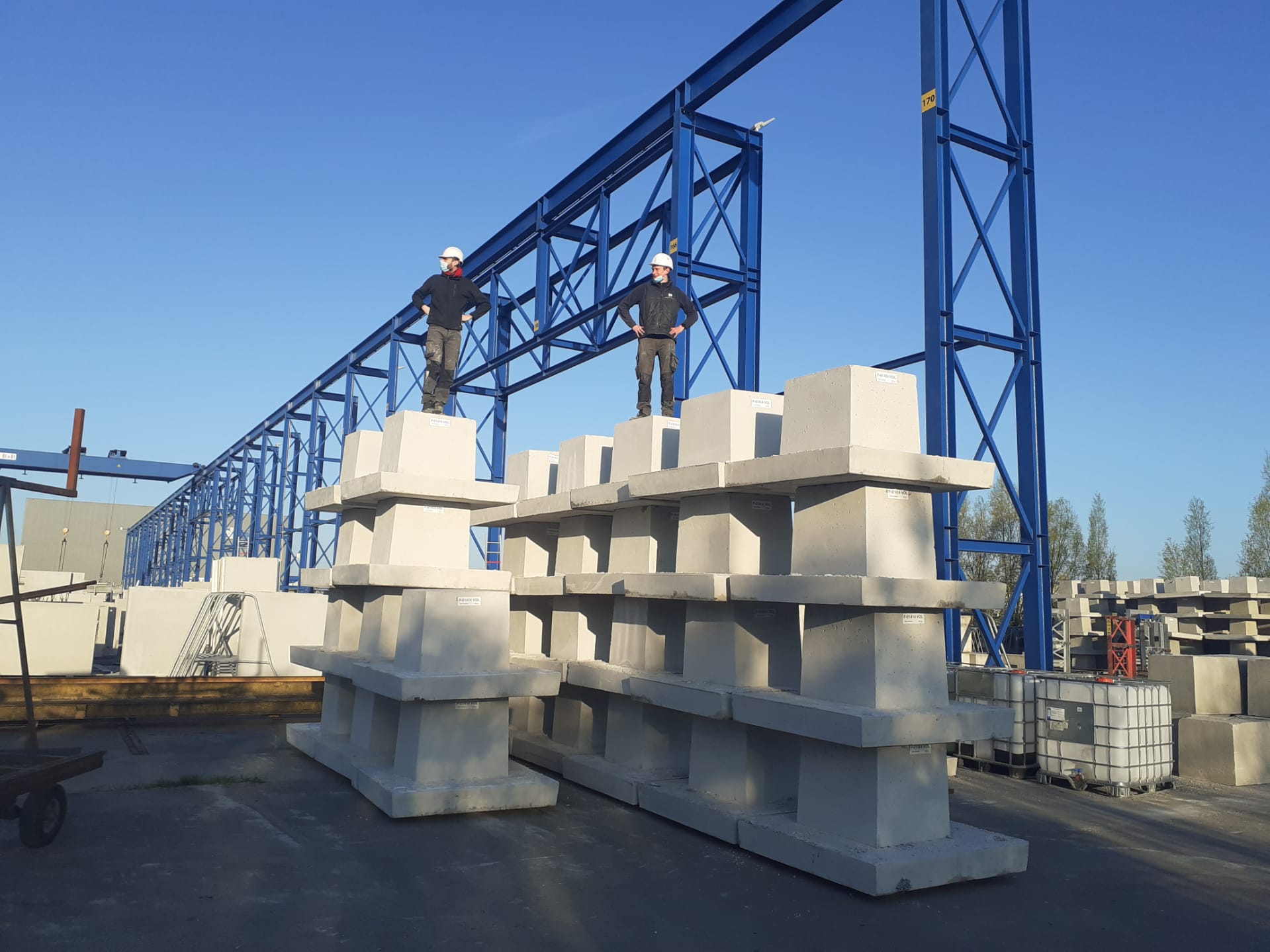"By the way, did you know that after water, concrete is the second most used material in the world?"
Wouter: "Making concrete is not that difficult, with a handful of ingredients you get a solid mass, which can be used for various building applications. The recipe consists of: cement, water, gravel and sand. The cement and water together become the glue that holds the sand and gravel together. That glue is crucial in the concrete process."
"If we take a look at how cement is made, it starts with digging up limestone. Then you heat it in a high-temperature oven to as much as 1450°C, which releases intrinsic chemical CO2. Then we grind it all into powder. Besides the CO2 released during the process, we also have to go through a number of energetic steps. Roughly speaking, one tonne of CO2 is released for every tonne of cement we produce. This is actually not too bad, but because we use it so extensively, no less than 4.1 billion tonnes of cement per year, it does account for 8-10% of world CO2 emissions."
ResourceFull looks for alternatives!
Wouter: "At ResourceFull we are always looking for alternatives. By this we mean the residual flows, but we also look at other flows, such as certain clays that we can convert into a more sustainable alternative. In this way, we solve several problems at once: the problem of the metal industry, that of the concrete industry and the waste mountain. Worldwide, in fact!"
"At the moment we work as a concrete and cement lab; we work on the one hand for customers who have a waste problem and on the other hand for concrete farmers who do not pick up innovation internally or who have difficulty doing so. The concrete farmers come to us looking for technology that they can implement with their subcontractors. That is also how we work. URBCON has now, for example, 'literally' laid the basis for a pilot project. We are talking about pilot project 3, Camp C. Together with construction promoter Willy Naessens, we put the foundations in URBCON concrete."
"The clean concrete market is still very recent and in full development, so there is still a lot of research to be done. We want to use this concrete to construct the buildings of the future, buildings that will still be there in 100 years' time, which requires the necessary research. The URBCON project belongs like no other in our major research phase. In terms of sustainability, we want to demonstrate that our concrete is indeed as good as, and perhaps even better than, traditional concrete."
"We hope that through our research we can motivate cities and towns to really create a push in the centre. Realise green concrete in their city and let that be exactly what URBCON is about."

